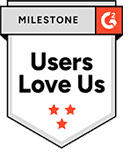
Hundreds of private organizations have begun their journey towards lease accounting compliance. Although, many of them underestimate the amount of effort involved with preparation. In particular, assembling a team of internal resources – and identifying their responsibilities – is one of the most important steps to a successful implementation.
In this blog, we explore 3 critical ways your lease accounting and management team can help you achieve success – and why you should get started now.
1) Lease inventory demands cross-departmental effort.
Identifying all leases held by an organization is a complex and time-consuming task that the accounting team cannot do alone.
To gather a full scope of all leases, accounting must engage with different areas of the business, including real estate and finance. You may also find it necessary to also include representatives from lease administration, C-level management, legal, procurement and IT.
Real estate or facilities teams are an efficient way to identify a company’s property leases. If a business has multiple locations, this may involve tracking down records from many different sites.
Additionally, departments such as procurement, IT and legal are essential to search through records for equipment leases and other contracts classified as leases under the new standards. For example, procurement might use a spreadsheet or other tool to track assets such as office machines, IT equipment or vehicle fleets.
By involving the necessary personnel early in the lease identification process, companies can feel confident that their lease inventory is thorough and accurate.
Learn more: How to Assemble Your Readiness Team
2) Lease information affects a variety of business decisions.
A company’s chosen lease accounting technology affects more than just the accounting team. Centralizing lease information into one system can transform efficiencies and financial savings beyond lease accounting compliance.
Therefore, when evaluating a lease accounting system, you will want to have a clear understanding of who will need to access lease information. The chosen solution should make it easy for them to make updates, run reports and export any data they may need. Thus, it may be necessary to include those representatives during the evaluation of the solution.
For instance, any employees responsible for ongoing tracking and management of leased assets — including making changes and adding any new leases — should be identified to verify the system is intuitive and easy to use, and therefore will help them keep lease data accurate and up to date.
You may want to also include various departments, including IT, to evaluate how lease technology can support your organization beyond just accounting compliance, including accounts payable, accounts receivable and other data-driven decisions. IT is integral to this process, to ensure the solution can properly meet your requirements for integration with various third-party systems.
Furthermore, involving executives, real estate/facilities staff, and others in the preparation process can make sure the chosen solution meets their needs beyond accounting and compliance requirements.
3) Teamwork is essential to lease accounting compliance.
It clearly takes more than the accounting team to transition to the new lease accounting standards and achieve compliance.
By identifying the roles and responsibilities of internal stakeholders early in the process, the compliance team can create a plan of action that ensures accountability throughout lease accounting implementation.
A team approach improves the efficiency, thoroughness and accuracy of data abstraction, which ultimately helps to ensure the company will meet compliance requirements on time and on budget.
Together, the transition team can make informed decisions that will make long-term impacts on the company’s lease investments.
Long-term benefits for lease accounting and for the business
Once a company successfully transitions to the new lease accounting standards, the identified team can continue to use lease technology to share information and make decisions that impact both financial reporting and business performance — empowering the company to both maintain ongoing compliance and maximize the return on leased asset investments.
To create a plan for assembling your stakeholder team and other steps of lease accounting implementation and compliance, use the Lease Accounting Milestone Planner.























